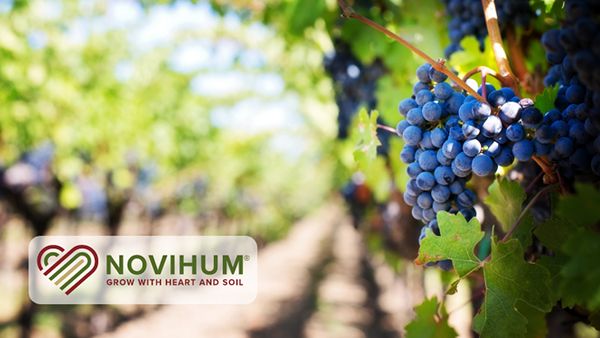Using Technology To Monitor Vineyards
Like many diligent winegrape growers, Walsh Vineyard Management used to employ pest control advisers to closely monitor the vineyards they manage, filling out detailed paper reports that included everything from moisture levels to pest pressures. The PCAs would then return to the office with their reports, which then had to be entered into a computer. Spreadsheets were created, and then the spreadsheets were printed out and appropriately filed or faxed to clients.
But there were problems with the system. First off, the information was only immediately accessible in the office, not at another office or, even better, out in the field. Second, someone had to re-enter all that information, which was a duplication of efforts and seemed like a waste of time and money. Walsh, which manages thousands of acres of premium winegrapes on California’s North Coast, figured there had to be a better way. They called in Mike Bobbitt, a geographic information systems (GIS) consultant who has been building computer maps of vineyards for the past 10 years.
Bobbitt immediately recognized the system’s flaws. The lack of accessibility to the paper maps could be quickly solved by posting all the information on a webpage, which could then be reviewed by anyone with the necessary password.
“Now that information can be accessed by a lot more people more readily, even in the field,” says Bobbitt. “Information is only valuable when people are using it. The more employees and customers have access to the information, the more value an organization is going to realize from that information.”
Workers Love It
But there were a lot of other advantages as well. First, the most efficient way to enter the information for the web would be to get rid of the paper notebooks and use personal digital assistants (PDAs). While that may represent an up-front cost, there’s also immediate cost savings in eliminating all the data entry and processing back at the office. Walsh’s Towle Merritt said entering the information into the database in the field is a huge advantage.
“Once it is synched with our database, it is automatically part of any report run,” he says. “No paper, no administering reports, just information collected and information used. That is extremely user-friendly.”
Also, by using the PDAs, they could employ simple drop-down menus (see chart, “Walsh Decision Tree”) that could be used by lower level employees to reliably enter consistent data. The drop-down menus cover all aspects of vineyard management, including phenology, moisture levels in both the tissue and the soil, and pest and disease scouting information. Merritt said the decreased labor costs were great, but there were additional benefits he hadn’t anticipated.
“We have found that with our system, our motivated field staff can outperform traditional college-educated employees,” he says. “They have a better work ethic, more company longevity, and more vineyard experience. With the many industry-supported Spanish language classes, we can provide them with ample education on how we want to scout our fields.”
Nice Surprise
Merritt said the new technology has allowed his employees to more fully use their talents, and he thinks that growers who implement a similar system will be pleasantly surprised at just how much such systems — and their employees — have to offer. “You cannot necessarily predict all of the ways you are going to be able to use the system until you have that infrastructure in place and start gaining some experience with what it can do,” he says. “You can probably predict some, but not all of the ways your employees are going to figure out how to do their jobs better until they have some of these tools in their hands.”
It’s difficult for Merritt to detail for other growers exactly how much they have saved in implementing the system, or even how much they have spent. “For example, Walsh Vineyard Management had previously invested in developing base GIS layers and attributes for the vineyard blocks, so we were really building on some infrastructure we already had in place,” he says. “Not everyone is going to be in that same position.”
In addition, a lot of the benefits are not quickly quantifiable, such as accessing more information more quickly. “The bottom line is the system is exceeding our expectations and allowing us to do things better and quicker using fewer resources than we could before,” he says.
Whither The Web
Walsh Vineyards Management’s Towle Merritt offered the following tips for growers considering a Web-based management system:
- “Don’t let some of the up-front costs scare you from making the investment. You need to make sure you are considering the amortization of these costs over the potential life of the system.”
- “Don’t try to do it all at once. Start small and expand.”
- “Don’t be afraid to bring in an expert to guide you more quickly through the process rather than paying the costs of the trial and error of trying to do it all yourself.”









